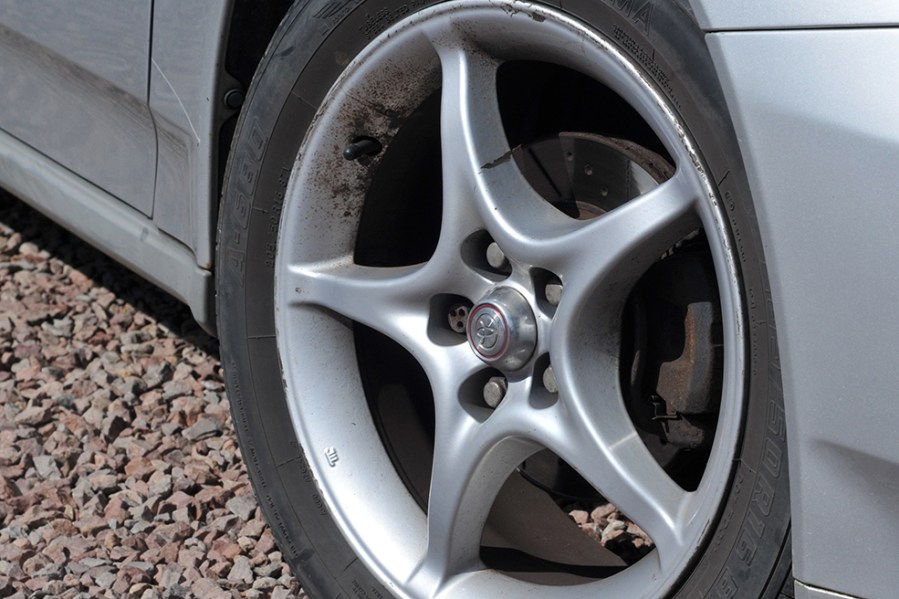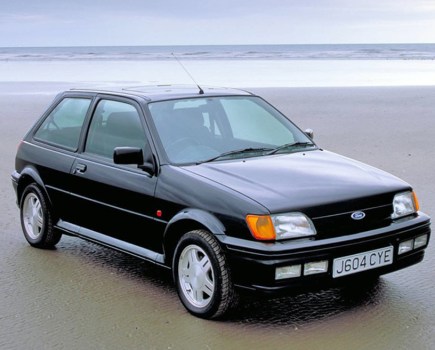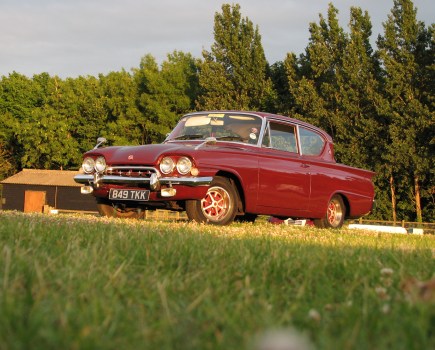Sharply styled and equally as sharp to drive, the Toyota Celica T230 is a fantastic front-drive sports car. Here’s how to buy one
Images: Paul Wager With thanks to: Malcolm Graham-Jones, Toyota Enthusiasts Club
Once a staple of the UK sports car market, the last Toyota Celica – by this point in its seventh generation – rolled off the production line in April 2006. Where some previous iterations had drawn on Toyota’s rally heritage, the T230 instead concentrated on being an engaging sports car that was equally at home on the daily commute as it was providing B-road thrills.
Revealed as a concept at the 1999 Detroit Motor Show, there was an edgier, more angular look for the new model. European sales began in November the same year; just two engines were available, both 1.8 four-cylinder units, with the entry-level VVT-i motor producing 140bhp. This was joined shortly after by the 189bhp VVTL-i unit (badged 190) that boasted variable valve lift technology, an impressive specific output of more than 100bhp per litre and notably punchy performance.
August 2001 saw the arrival of the Celica T Sport model boasting plenty of standard kit, while 2003 saw a wider refresh that brought exterior and trim revisions, along with upgrades to the brakes and suspension. The GT of 2005 was a last hurrah that featured uprated suspension and a racier body kit, and less than a year later the Celica was gone.

Bodywork
Despite the earliest seventh-generation Celica being over 20 years old, the good news is that corrosion needn’t be a major concern. It’s worth checking the panel edges, floor pan and suspension mountings, and you’ll want to take a good look beneath plastic sill trims as rot can lurk unseen, but that should be about it.
Unsurprisingly, the performance and agility on offer may have tempted some drivers to exceed the limit of their talent, so it’s best to ensure the history is free of major accident repairs. And don’t be surprised to find a few stone chips around the nose, rotten front fog light mounts, and the odd scuff and scrape, along with a front spoiler suffering from speed bump collisions.
It’s easy enough to find new and second-hand panels and exterior parts, with the only exception being the body kit fitted to last-of-the-line GT models; with relatively few made, replacement items are pricier. And if you’re considering an import, be sure those same parts are undamaged as sourcing replacements might be trickier.

Engine and transmission
Well maintained engines in the seventh-generation Toyota Celica should cover up to 200k miles without major drama, so a history file bulging with service receipts will be good news. Fresh oil and filter every 6000 miles will prolong the life of the timing chain, too – and on the subject of oil these engines do like a drop.
A pint every 600 miles isn’t uncommon, so check the level on a potential purchase, while pre-52 plate 140 models could suffer from excessive burning of oil; revised piston rings after that should have alleviated the issue, and despite the potential for harder use the 190 engine is considered more bullet-proof in this respect.
It’s also worth checking for oil leaks, often from around the sump, and you’ll want to ensure that 190 engines do their cam lift party trick once you hit 6200rpm. Further investigation will be needed if you don’t feel the extra punch. Those engines also got a unique rear exhaust box, and replacements are pricey. Aside from the potential for a corroded radiator there’s little to worry about with the cooling system.
More important is asking about any tuning or mods – it’s not necessarily a problem, but make sure you’re happy with the standard of any work. As for the engine control systems, it’s just a case of keeping an eye out for warning lights. An illuminated Engine Management Light could point to problems with the air-flow sensor (it’ll also disable the traction control on a 190), and while a clean may sort the problem you might have to budget for a replacement.
Transmission-wise, the six-speed manual (an automatic means it’s an import) is strong unless subjected to ham-fisted use or track day hammerings and whines and crunching synchromesh will be obvious. That’ll necessitate a four-figure rebuild or a good second-hand replacement at up to £500, and if the gearchange is less than slick it may be time for new linkage cables.
Clutch wear on hard-used examples is a further issue, and it’s worth bearing in mind that the 190’s shorter gear ratios dented motorway refinement. Overall, it’s a pretty good picture, though, and as long as you avoid abused and neglected examples there’s not much to worry about.

Suspension, steering and brakes
The Toyota Celica’s suspension set-up was a straightforward one, so the only real concern for the used buyer is wear and tear. Unless the car you’re looking at has been religiously maintained there’s the usual likelihood of tired dampers and bushes, so budget accordingly if an overhaul is on the cards. It’s another area where modifications might have been made, though, and while you might like the Tarmac-scraping look it’ll do the ride no favours; it’s already quite firm on cars with 17-inch wheels, and the cost of returning it to standard specification will soon add up.
Of more concern is the potential for corrosion on top of the rear sub-frame, so be sure to have a good prod here – a replacement part can be found for a couple of hundred pounds but fitting is a fiddly task. You should listen out for the drone of worn rear wheel bearings, too, with a complete replacement hub costing about £200.
The Celica’s lightweight construction at least means the brakes don’t suffer undue punishment in normal use, although corroded discs on little-used examples and rotten back plates at the rear are issues to watch for.
Replacing the latter can cost more than £100 per side, and look for rusty pipes and for any leaks from around the master cylinder, too.
There’s not much to worry about with the steering, which should feel sharp and responsive, although the power steering pipework is exposed to the elements and can suffer from corrosion and leaks.
Finally, look for uneven tyre wear, and alloys suffering from kerb damage and corrosion although refurbishment won’t break the bank at around £70 per corner.

Interior, trim and electrics
For a relatively compact sports car – at least compared to today’s bloated offerings – the cabin doesn’t feel notably cramped and most drivers should be able to find a sound driving position. And thanks to the large tailgate and decent luggage space it was usefully practical too, although that’s probably not what most Celica buyers had in mind. OK, so the interior features plenty of shiny plastics, so it’s durable rather than plush, but it does at least feel well screwed together and there’s plenty of kit.
Entry-level Toyota Celica models featured the likes of ABS, air-conditioning and electric windows, and splashing out on the Premium Pack brought climate control and leather upholstery both of which were standard for 190 models. It’s not the highest grade of hide ever to grace a car interior, but it wears well enough meaning issues tend to be confined to threadbare seat bolsters, split stitching and sun damage.
Assuming it’s not badly damaged, a session with rejuvenation products should bring it back to its best. As for the electrics, well it’s just a case of making sure everything works as intended and if you discover that items like electric windows or the stereo have given up the ghost you should be able to find a ready supply of second-hand parts.
Check the operation of air-con/climate control systems, though, as failure is often ignored due to the cost of getting it working again. If a new condenser is needed it’ll set you back around £100.

Toyota Celica (T230): our verdict
The Toyota Celica’s sharp looks and agile handling certainly proved a hit with buyers and car magazine road testers alike when it was new – and with affordable prices, it’s a coupe that can still entertain today for very little outlay.
Around £1000 is the starting point for a 140 model in need of TLC – anything less is in spares or repair territory – but you should get a tidier, usable one for less than £2000.
That price point should secure a scruffy 190, with better ones from £2000, while upping the budget to £3500 or so unearths a decent number of either version with 80–120k miles on the clock. The best hover around £4000–5000 but at that money you should expect a low mileage and immaculate condition.
Incidentally, we’ve also been told that 190s are disappearing at a faster rate as people want the engines to swap into MR2s. That aside, condition and history matter most, and with prices remaining broadly static over the last few years this isn’t really a car to buy with an eye on investment.
Instead, find the best you can afford and just enjoy everything this capable coupe has to offer.
Toyota Celica (T230) timeline
1999
Production of the seventh-generation Toyota Celica, codenamed T230, begins in July at the Kanto Auto Works factory in Susono, Japan
European sales begin in November, beginning with the Celica 190
2001
Celica 190 phased out of UK lineup; flagship T-Sport arrives
2003
Facelifted Celica introduced
2004
Celica discontinued in the US market in summer
2005
Celica GT released for the UK market (not to be confused with the US-market model of the same name) with revised bodykit and wheels plus lowered suspension and Alcantara trim
2006
UK sales end in January following new emissions regulation
Production ends in April; from the first Celica in 1970 until the last in April 2006, 4,129,626 examples of the Celica are produced




















